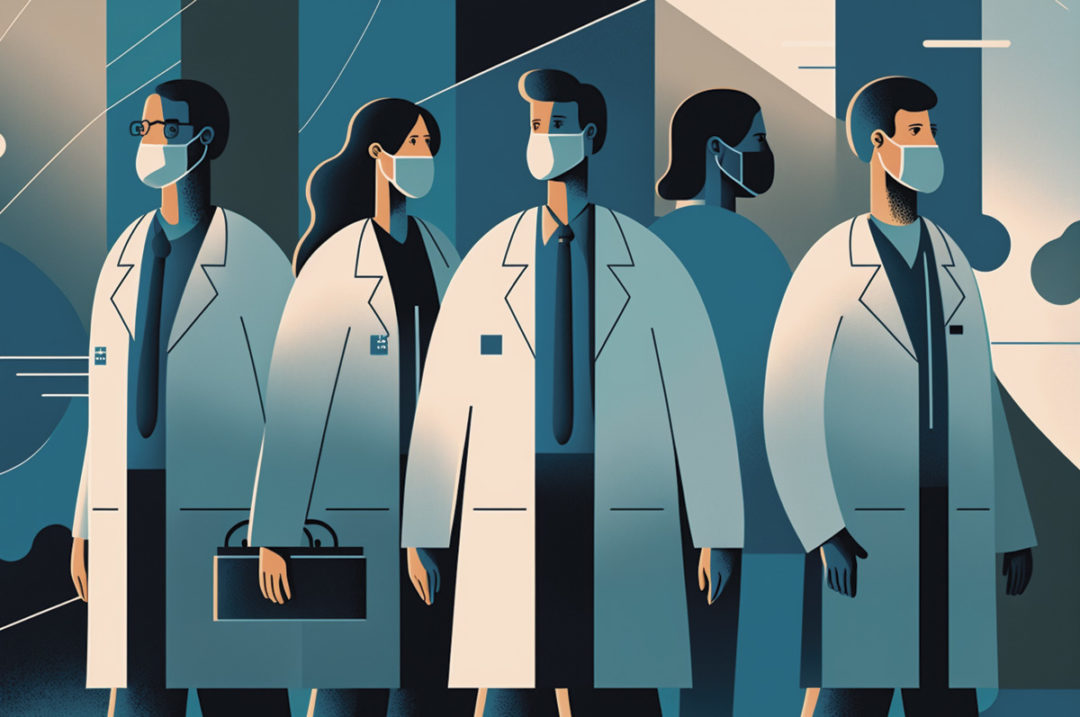The last decade has seen our hospitals embracing new ways of collecting and using data – the digitization of healthcare. As robots, smart cameras, sensors, and artificial intelligence (AI) become common on the farm, can doctors teach us what works and what doesn’t?
Smart sensors
Fitbits and Apple Watches change the nature of data collection and sharing in hospitals. Wearable health devices provide real-time relevant data for doctors and consultants, freeing bedside staff from constant monitoring and allowing them to communicate with each other in real time.
Agriculture, specifically high-value crops such as fruits and vegetables, is using sensors to enable precise monitoring of crop conditions for moisture (irrigation efficiency), diseases, harvest readiness and other factors. Previously, this was time-consuming and labor-intensive with frequent observational errors. Now, sensors can accurately analyze dairy farm inputs and management in real time, increasing precision and giving farmers back time. Dairies are at the forefront of this in the livestock sector, with over 2 million smart devices attached to our cows in the form of ear tags, collars, leg and tail monitors. A more recent example of monitoring is the arrival in the U.S. market of smart rumen boluses for monitoring. Knowing a cow’s movement, productivity and health before problems become visible is worth hundreds of dollars per animal per year to a dairy farmer. The lesson from healthcare is that the use of sensors will continue to grow for the cow, in the barn and in the milking parlor.
Robotics
America’s largest hospitals increasingly rely upon the delivery of samples by robots, a job formerly done by nurses and other healthcare staff. In Denmark, Aalborg University Hospital uses robots to get 3,000 patient blood samples from the hospital ward to the laboratory for testing. Robots are focused on the single task of ensuring the samples are delivered on time, at a constant temperature and accurately from point A to point B without a mix-up.
The use of robots in agriculture takes on the tasks of harvesting, planting, irrigation and other manual labor. Sometimes robots are even more efficient than humans. For example, Taylor Farms uses robots to pack 60 to 80 bags of salad a minute, doubling the output potential of a human worker. In the dairy industry, we already know that robots can milk cows (or more precisely, allow cows to decide when they want to be milked). There are also robots for cleaning manure out of barns and pushing up feed. We estimate these robots are assisting more than 1 million cows globally. While the use of robots was initially seen as a small farm phenomenon (for farms of 1,000 cows or less), many of the larger farms are now taking on this model, especially in places such as California where labor is harder to find. The opportunity to use robotics to replace repetitive tasks is one the healthcare industry has learned well.
ChatGPT/ AI
Clinicians’ mistakes cost the healthcare industry over $2 billion annually and affect the lives of more than 200,000 people. AI is playing a critical role in eliminating these mistakes. Errors caused by fatigue, memory, lack of experience or training, and pure mishaps are significantly reduced when AI supports decision-making. While ChatGPT is the most visible example of the use of AI, there are many more examples of machine learning and AI improving healthcare outcomes in the hospital system.
What mistakes could we eliminate on our farms? AI can eliminate human errors by accurately analyzing data, predicting yields, identifying potential health challenges, optimizing resource allocation and linking decisions to market demands and prices. In fact, AI computations can play a crucial role in addressing carbon credits and resource scarcity. Big data and cloud computing are also allowing farmers to address the real complexity they face of weather, genetics, market turbulence and the microbiome of soil and the animals they feed.
Despite the use of technology, hospitals have not reduced the number of doctors, nurses or caregivers. While the World Bank has raised concerns about the adoption of robots and AI, human labor is not being eliminated. Instead, the jobs humans fill have shifted, and the same is expected to happen in agriculture.
Future dairy workers should also be evaluated for their knowledge of data analysis, software engineering and coding. A McKinsey survey revealed that more than 50% of large farms and nearly a quarter of small farms are using (or planning to use) precision agriculture technology, so the demand for high-skill jobs will only grow.
How should dairy producers prepare for these changes? Retain and invest in talent. Agricultural employment in the U.S. is only expected to increase by 1%. Farming has always had a “people problem,” but as agri-executive search group Kincannon & Reed says, “If it was difficult to find good help before, then it’s even more difficult now.”
Traditionally workers have left farming because of poor pay and difficult conditions. If automation replaces the jobs laborers don’t want to do, the opportunity will be for stimulating, higher-paying work that attracts and retains an adaptable workforce.
As I noted in my new book, The Future of Agriculture, education and training programs cultivate a diverse and flexible workforce that evolves with each innovation. Talent retention goes hand in hand with talent investment.
Technology on the farm offers solutions to many of agriculture's most pressing problems. If dairy farmers can learn from healthcare and invest in the workforce now, these technologies will boost productivity and profits. Does healthcare provide a road map for a farming digital transformation? Yes. Using robotics, sensors and AI can help produce food efficiently, precisely, cost-effectively, safely and affordably, and can also answer consumers' sustainability, climate change and resource scarcity concerns.





